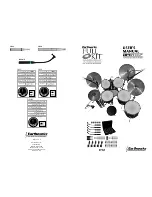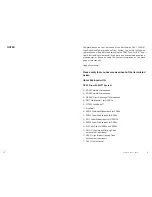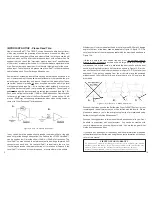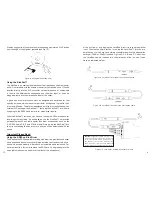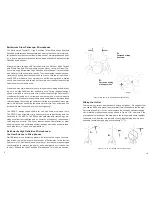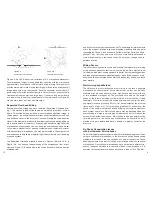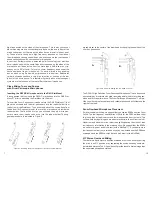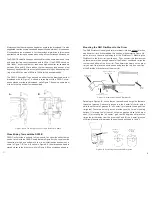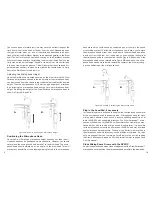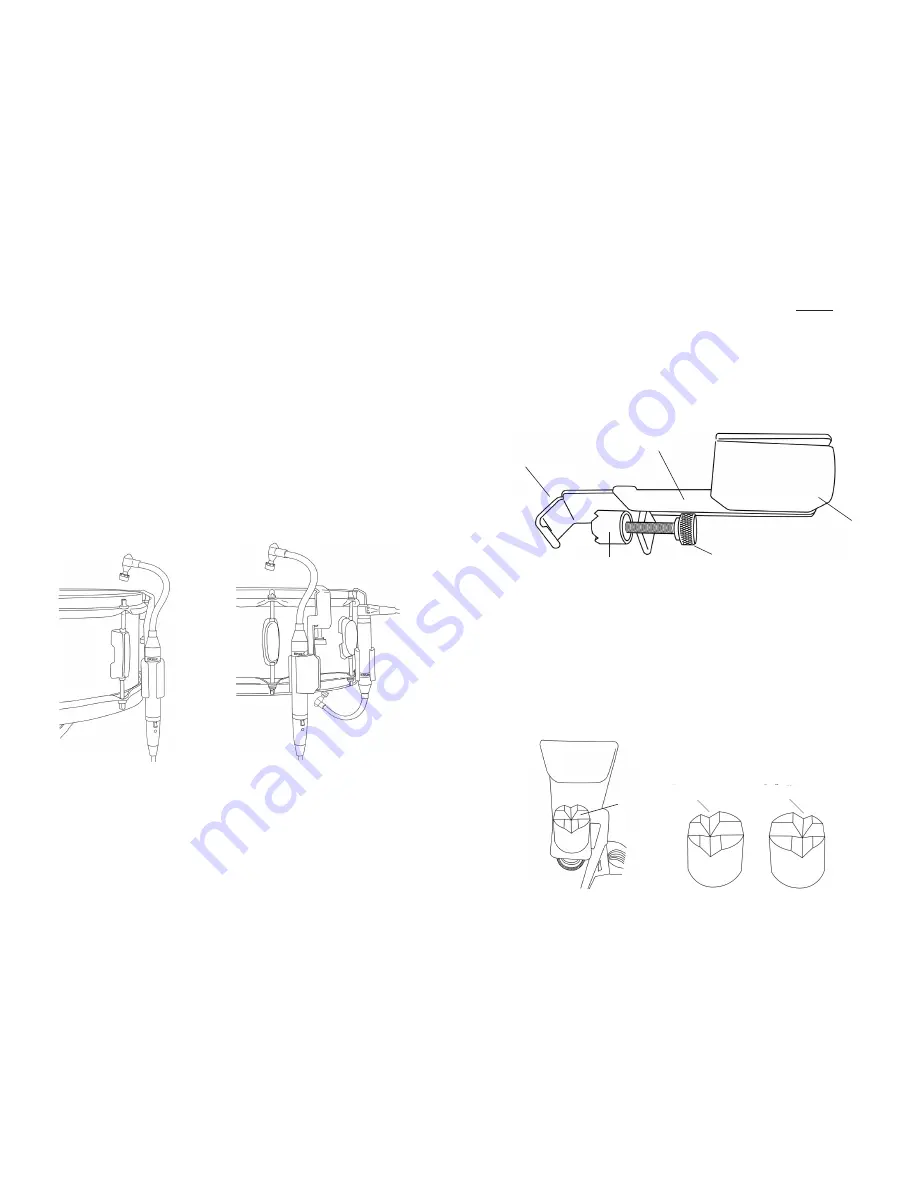
8
Soft Polyolefin® Coated
Metal Bracket
Rubber
Holder
Delrin®
Cushioned Rim-guide
Hook Portion
of Bracket
Thumbscrew
Mounting the RM1 RimMount to the Drum
The RM1 RimMount is designed for metal drum rims, and will not work on
wooden drum rims. While reading this section, please refer to Figure 4-A,
which refers to the various elements of the RimMount™. Mounting the
RimMount to the drum rim is quite easy. First, unscrew the thumbscrew
so there is more than enough space for the Delrin® cushioned rim-guide
to clear the bottom of the drum rim. Then determine where on the drum
rim you want to place the microphone and place the top “hook portion”
of the RimMount bracket over the drum rim.
Figure 4-A. Elements of the RM1 RimMount™
Referring to Figure 4-B, notice that on the cushioned rim-guide there are
two sets of grooves. One set of grooves is in the “center” of the rim-guide,
while the other set of grooves is “off center” (or closer to the edge of the
rim-guide). These two sets of grooves provide you with “three” mounting
options: (1) placing the “off center” rim-guide grooves close to the drum
shell, (2) or rotating the “off center” grooves 180 degrees will place the
rim-guide further away from the drum shell, and (3) the “center” grooves
will allow placement in-between the positions described in 1 and 2.
\
Figure 4-B Positioning the Cushioned Rim-guide
Offset Groove
Positioned
on Left
Offset Groove
Positioned
on Right
Centered
Grooves
Always position the microphone head at an angle to the drumhead. It is also
suggested that the microphone head be positioned between 1.5 inches and
3 inches above the drumhead. All of the previous information in this manual
applies to both toms and snares when using a Drum Periscope Microphone.
The DP30/C SnareMic has been optimized for miking snare drums and toms
and has a low frequency response down to 30Hz. If the DP30/C sounds a
little “tubby” on your snare drum, then use a high-pass filter set somewhere
between 60Hz and 100Hz to reduce the low frequency response or a low
frequency equalizer (EQ) to accomplish the same thing by attenuating/cut-
ting a few dB in the area of 60Hz to 100Hz for the desired results.
The DP30/C SnareMic™ can be used on either the top drumhead, bottom
drumhead or both. Figure 7-A shows a snare drum with a DP30/C micro-
phone placed over the top drumhead, while Figure 7-B shows a share drum
with both the top and bottom heads miked.
Figure 7-A and 7-B Miking the Top or Top & Bottom of a Snare
Close Miking Toms with the DP30/C
DP30/C will provide a rich and full tom sound. You can mike either the top
head of a tom with the DP30/C as indicated in Figure 8 or you can also mike
the bottom, or top and bottom of a tom in a similar fashion as shown on a
snare in Figure 7-B. You will notice in Figure 8-A the microphone head is
placed closer to the drum rim, while in Figure 8-B the microphone head is
11
A.
B.
Summary of Contents for SR25
Page 2: ......

